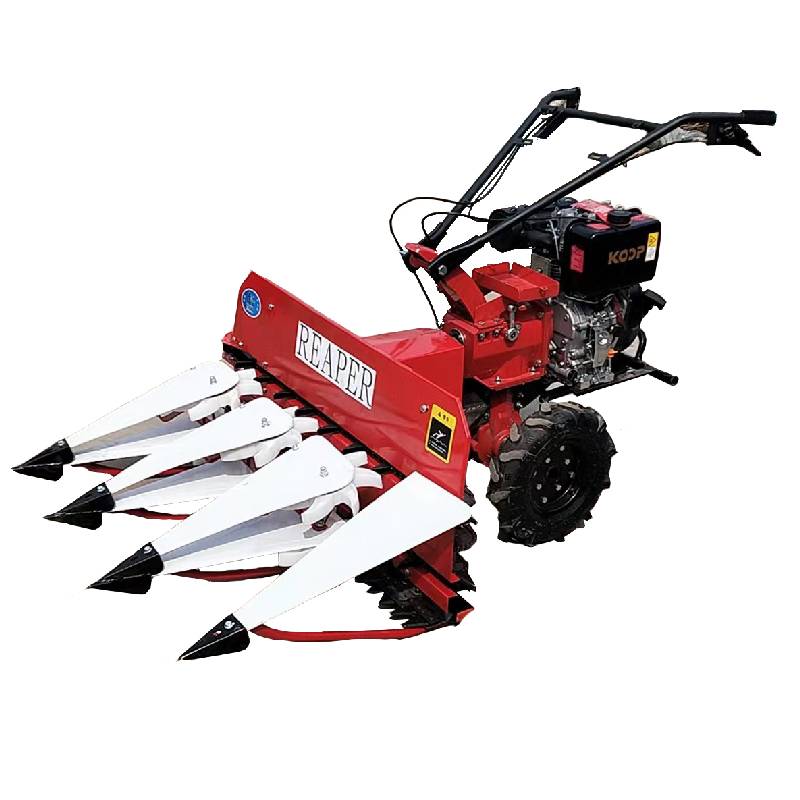Comprehensive Guide to Operating the Manual Reaper Machine for Efficient Harvesting Techniques
Understanding the Manual Reaper Machine A Revolutionary Agricultural Tool
The manual reaper machine is one of the most significant innovations in agricultural history, drastically altering the way farmers harvest crops. Before its introduction, farming was a labor-intensive process, requiring numerous hours of backbreaking work to cut down grains such as wheat and barley. This article delves into the design, functionality, and impact of the manual reaper machine on modern agriculture.
Design and Functionality
The manual reaper machine, often referred to simply as a reaper, is engineered to efficiently cut and gather crops. The basic design features a sharp blade that moves in a scything motion as it is pushed or pulled across the field. Farmers typically equip the reaper with handles for ease of operation, allowing them to maneuver it effectively through fields teeming with ripe crops.
The reaper's cutting mechanism is pivotal to its function. As the machine advances, the blade slices through the stalks of grain, drastically reducing the time required for harvesting. Unlike traditional methods that involved sickles, which necessitated bending and lifting, the reaper allows for standing operation, minimizing physical strain.
Moreover, many manual reapers come with an added feature of a gathering device. This collects the cut crops and organizes them into neat rows, making it easier for farmers to bundle and transport the produce after harvesting. The design varies across models, with some incorporating wheels for enhanced mobility, while others are lightweight and easily portable.
Historical Significance
manual reaper machine

The introduction of the manual reaper dates back to the mid-19th century. Pioneered by innovative minds like Cyrus McCormick, the reaper fundamentally changed agricultural practices. Prior to its invention, harvesting was done mostly by hand, and it could take weeks to complete the job, especially over large fields. The manual reaper not only cut down the harvesting time significantly but also allowed farmers to cultivate larger areas of land, thus boosting productivity.
This transition from manual labor to mechanized harvesters marked the beginning of the agricultural revolution. It paved the way for sustainable farming practices, as farmers could harvest more produce in less time, leading to an increase in food supply. The steady increase in efficiency allowed for better management of resources and laid the groundwork for modern farming techniques.
Impact on Agriculture
The impact of the manual reaper machine continues to be felt in today's agricultural landscape. Although advancements in technology have introduced more complex machinery, the core principles behind the reaper remain relevant. Modern harvesters, which are often mechanized and powered by engines, still employ the basic cutting and collecting mechanisms first introduced by the manual reaper.
The introduction of reaping machines has contributed to a significant reduction in labor costs and improved crop yield. Farmers can now harvest their crops timely, reducing losses that could occur from delayed harvesting. Additionally, by alleviating some of the physical demands of farming, the manual reaper has made agricultural work more accessible to individuals with varying levels of physical ability.
Conclusion
In summary, the manual reaper machine stands as a testament to human ingenuity in the realm of agriculture. Its design and functionality revolutionized crop harvesting, enhancing productivity and shaping the future of farming techniques. Even today, as we embrace advanced technology in agriculture, the foundational principles laid down by the manual reaper continue to influence farming practices globally. Understanding the significance of such machines not only pays homage to our agricultural heritage but also underscores the ongoing journey of innovation in farming.
Latest news
-
When to Upgrade Your Old Forage HarvesterNewsJun.05,2025
-
One Forage Harvester for All Your NeedsNewsJun.05,2025
-
Mastering the Grass Reaper MachineNewsJun.05,2025
-
How Small Farms Make Full Use of Wheat ReaperNewsJun.05,2025
-
Harvesting Wheat the Easy Way: Use a Mini Tractor ReaperNewsJun.05,2025
-
Growing Demand for the Mini Tractor Reaper in AsiaNewsJun.05,2025
